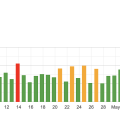When it comes to maintaining a vibrant and engaging website, regularly updating your content can make all the difference. In “How Often Should I Update My Website’s Content?” you’ll discover the importance of frequent updates and how they can boost your site’s SEO, keep your audience engaged, and ensure your information stays relevant and accurate. From understanding the right balance to knowing when it’s time for a refresh, this guide provides practical tips to help you keep your website fresh and dynamic without overwhelming you with constant changes. Have you ever found yourself wondering, “How often should I update my website’s content?” It’s a common question, especially with the rapid pace of digital marketing and SEO’s ever-evolving landscape. Your website is like your virtual storefront, and just like any good shop, it’s essential to keep things fresh and engaging.
The Importance of Updating Your Website’s Content
Keeping your content fresh isn’t just a matter of keeping up appearances. There are numerous tangible benefits to regular updates.
Boosting SEO
Search engines love fresh, relevant content. Regular updates signal to Google and other search engines that your site is active and providing current information, which can lead to higher rankings on search engine results pages (SERPs).
Engaging Your Audience
People visit your website for information or services. If they find outdated content, they might question your credibility or lose interest. Regular updates keep your audience engaged and invested in what you have to offer.
Reflecting Changes in Your Business
Your business isn’t static, and your website shouldn’t be either. New products, services, events, or changes in company structure should all be reflected in your content to maintain an accurate representation of your business.
How Often Should You Update?
This is where things get interesting. There’s no one-size-fits-all answer, but here are some guidelines depending on your type of business and goals.
Blogs and News Articles: 2-3 Times a Week
If you run a blog or a news site, regular content is crucial. Aim for at least two to three new posts per week to keep your audience coming back for more and to improve your SEO rankings.
E-commerce Websites: Weekly
Product descriptions, promotions, and inventory status can frequently change. Updating your site weekly ensures that your customers have the most accurate and current information.
Service-Based Businesses: Monthly
For service-based websites, monthly updates are typically sufficient. This could include updates to service offerings, pricing changes, and new customer testimonials.
Static Websites: Quarterly
If your website is more static and doesn’t require frequent changes, aim to review and update your content quarterly. This can include checking for outdated information, broken links, and ensuring contact information is current.
| Type of Website | Update Frequency |
|---|---|
| Blog/News | 2-3 times a week |
| E-commerce | Weekly |
| Service-based | Monthly |
| Static | Quarterly |

Types of Content to Update
Not all content is created equal. Different types of content will require different approaches when it comes to updates.
Blog Posts
Blog posts are often the bread and butter of your content strategy. Regular updates can improve their SEO value and keep them relevant.
Product Descriptions
For e-commerce sites, keeping product descriptions current can help avoid customer frustration and improve sales.
Testimonials and Case Studies
These forms of social proof can get stale over time. Update them with new customer stories and recent results to maintain credibility.
About Page
Even your About Page isn’t immune to change. As your company grows, so should the story you tell about it.
FAQ
Customer inquiries evolve, and so should your FAQ section. Regularly update this section to address new common questions and concerns.
Techniques for Updating Content
Alright, now that you know what to update and how often, let’s get into the nitty-gritty of how to actually do it.
Content Audits
A content audit involves reviewing all the content on your site and evaluating its performance. Use tools like Google Analytics to identify what’s working and what needs updating.
Scheduled Updates
Don’t leave updates to chance. Create a content calendar to plan and schedule your updates. This will ensure consistency and help you stay organized.
User Feedback
Customer feedback can provide valuable insights into what content needs updating. Use surveys, comment sections, and social media to gather opinions.

Tools to Help You
Utilizing the right tools can make updating your website’s content significantly easier.
Google Analytics
This tool is indispensable for understanding how well your content is performing and where updates are needed.
Content Management Systems (CMS)
Platforms like WordPress have built-in tools for updating and managing your content with ease.
SEO Tools
Tools like Ahrefs, SEMrush, and Moz can provide valuable data on how your content is performing from an SEO perspective.
Benefits of Regular Updates
You might be thinking, “This sounds like a lot of work. What do I really get out of it?” The benefits are numerous and well worth the effort.
Improved SEO Performance
Regular updates can lead to higher search engine rankings, which in turn can drive more traffic to your site.
Enhanced User Experience
Fresh content keeps your audience engaged and can lead to higher conversion rates.
Greater Credibility and Authority
Regularly updated content shows that you’re a credible and authoritative source in your industry, which can build trust with your audience.

Common Pitfalls to Avoid
While updating your content is generally beneficial, there are a few common mistakes you’ll want to avoid.
Quantity Over Quality
Don’t fall into the trap of updating just for the sake of it. Quality content will always have more value than frequent, low-quality updates.
Ignoring Analytics
Flying blind without understanding what your audience wants can lead to ineffective updates. Always use analytics to guide your decisions.
Inconsistent Updates
Inconsistency can be confusing for your audience and detrimental to your SEO. Stick to a schedule to maintain regular updates.
Wrapping Up
Updating your website’s content regularly is essential for maintaining SEO rankings, keeping your audience engaged, and reflecting the latest developments in your business. While the ideal frequency depends on the type of website you run, the key is to find a balance that works for your audience and your resources. Use the right tools, stay organized with a content calendar, and always prioritize quality over quantity.
So, what’s your next move? Grab your calendar, set a schedule, and start planning your content updates. Your website—and your audience—will thank you.











